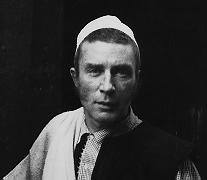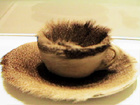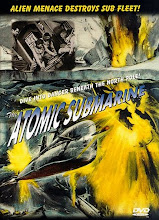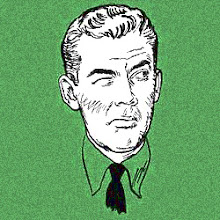 Ian McLellan Hunter, blacklisted in the U.S. and writing teleplays and screenplays in England and Europe under assumed names (including Samuel B. West), wrote and/or helped write two episodes of the British TV series, The Four Just Men, based on 1921 and 1939 films that had been based on Edgar Wallace's novel Just Men. In the novel, four British veterans of WWI pledge to use their different professional specialties to fight postwar injustice. In the 1959-60 series the four are WW2 vets, spread out now that the war is long done but still fighting like a unit.
Ian McLellan Hunter, blacklisted in the U.S. and writing teleplays and screenplays in England and Europe under assumed names (including Samuel B. West), wrote and/or helped write two episodes of the British TV series, The Four Just Men, based on 1921 and 1939 films that had been based on Edgar Wallace's novel Just Men. In the novel, four British veterans of WWI pledge to use their different professional specialties to fight postwar injustice. In the 1959-60 series the four are WW2 vets, spread out now that the war is long done but still fighting like a unit. "Crime and mystery series that starred Jack Hawkins (as British M.P. Ben Manfred), Hollywood song and dance man Dan Dailey (as US journalist Tim Collier -who was based in Paris), Richard Conte (as New York Professor of Law, Jeff Ryder) and Vittorio de Sica (as Italian hotelier Ricco Poccari) all of whom had been members of the same unit during the war. They took turns each week in tackling an injustice (the episode being set in either London, New York, Paris or Rome) and each was aided by a female assistant, one of whom was future 'Avenger' Honor Blackman."
This show was a production of ITC and also of Sapphire Films. Sapphire was the group that put out "Adventures of Robin Hood," which had a pinko coloring to it and for which Ian Hunter also wrote.



 Is '60 the moment when the end of the end of the Old Left had been reached and the New Left began to emerge? Is it the final ascendancy, in certain scenes at least, of poetic postmodernity? Surely the publication of Donald Allen's The New American Poetry that year suggests this, but then again--once again--we look back on "New" here and see continuity. The rhetoric of the Kennedy-Nixon contest made much less of a dent than everyone (at the time as well as since) claimed, so one wonders why were such great claims made?
Is '60 the moment when the end of the end of the Old Left had been reached and the New Left began to emerge? Is it the final ascendancy, in certain scenes at least, of poetic postmodernity? Surely the publication of Donald Allen's The New American Poetry that year suggests this, but then again--once again--we look back on "New" here and see continuity. The rhetoric of the Kennedy-Nixon contest made much less of a dent than everyone (at the time as well as since) claimed, so one wonders why were such great claims made?  Had we come to expect "1960" to be truly ubiquitously modern in a way that the 1950s really were not--not quite? And what specifically does "modern" mean in the Kennedyesque talk then and now about the torch being passed to a new generation, etc.? The First Lady really meant "modernist" when Camelotians said "modern." What about the others across the new young cultural leadership? I've been surprised by how frequently the
Had we come to expect "1960" to be truly ubiquitously modern in a way that the 1950s really were not--not quite? And what specifically does "modern" mean in the Kennedyesque talk then and now about the torch being passed to a new generation, etc.? The First Lady really meant "modernist" when Camelotians said "modern." What about the others across the new young cultural leadership? I've been surprised by how frequently the  "Beat movement" was covered in 1960 in the mainstream press. I was expecting a fair measure but I've found tonnage. 1960 was the year when the figure of the beat was beginning to find acceptance, although still 80% of these stories are mocking, rebels-without-cause condescension. For anyone whose analysis made an impact nationally, do these antipolitical adolescents count as part of the "new young cultural leadership"? No, but rather than the two being opposites, they fall along a Continuum of the New American. Now that's a change for '60.
"Beat movement" was covered in 1960 in the mainstream press. I was expecting a fair measure but I've found tonnage. 1960 was the year when the figure of the beat was beginning to find acceptance, although still 80% of these stories are mocking, rebels-without-cause condescension. For anyone whose analysis made an impact nationally, do these antipolitical adolescents count as part of the "new young cultural leadership"? No, but rather than the two being opposites, they fall along a Continuum of the New American. Now that's a change for '60.







